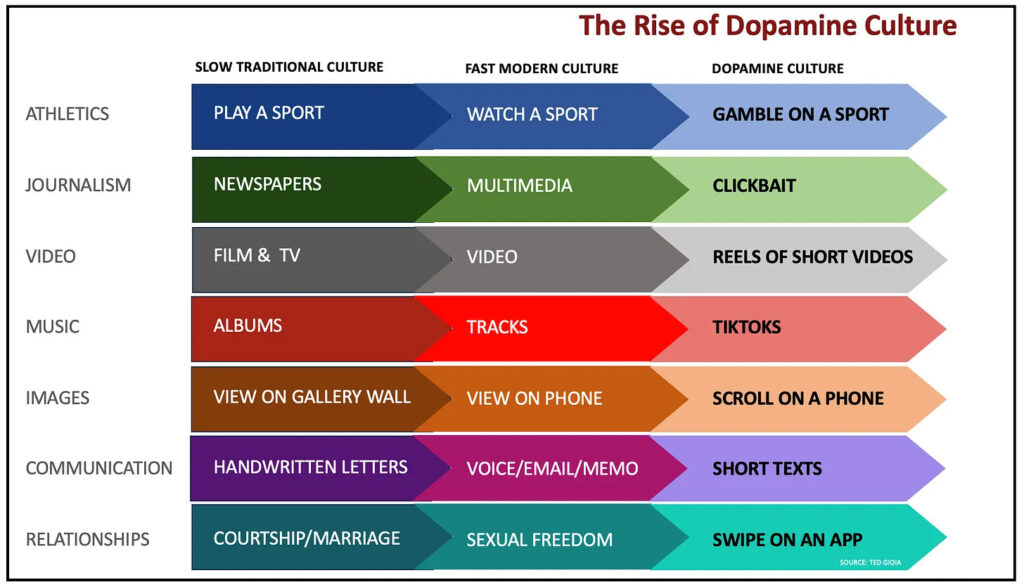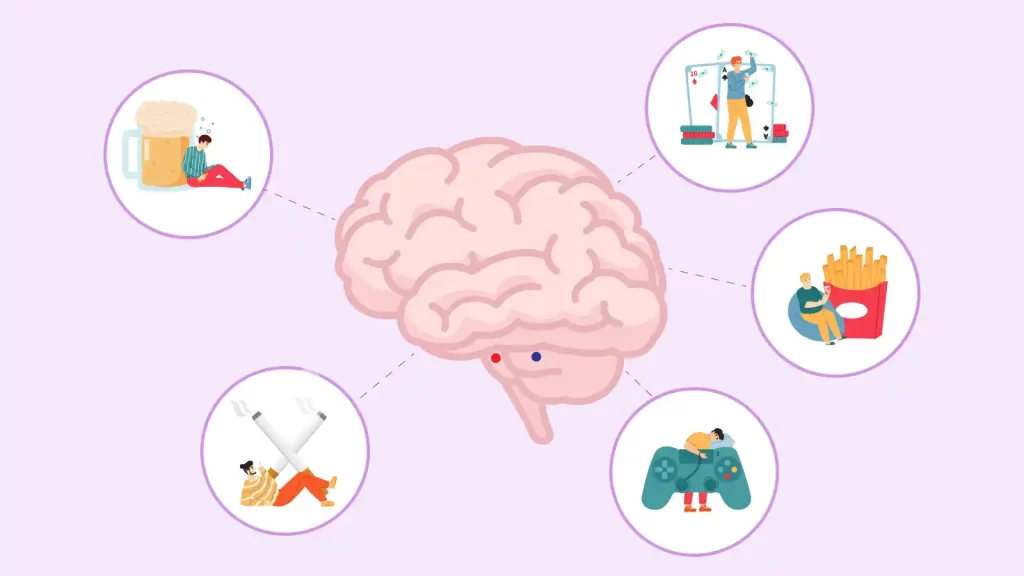There’s a restlessness in the air that feels all too familiar. It’s in the continuous buzzing of notifications, the endless scrolling, and the habitual reaching for our phones. We’re all searching for something, and more often than not, we don’t even know what it is. This is the core essence of Dopamine Culture—a contemporary addiction to instant gratification and short bursts of stimulation that’s quietly reshaping how we live, connect, and experience life. But what exactly is this culture doing to us?
What is Dopamine Culture?
Dopamine is the brain’s “feel-good” chemical, which is triggered every time we experience pleasure. It’s the petite high we get from receiving a text, the quick delight from a social media “like,” or the fleeting excitement of watching yet another 15-second reel. Our minds crave this rush, and social media businesses have caught on. This desire for short-term satisfaction has birthed an economy of distraction.
We’ve become participants in a world where stimulation is a constant need. Our senses are under siege, overwhelmed by information, entertainment, and consumerism. Everything—from our phones to our relationships—is designed to keep us returning, looking for more. But this quick-fix culture of pleasure isn’t just exhausting. It’s subtly eroding our well-being.
The problem is not dopamine itself—dopamine is natural, essential even—but the way it’s being hacked by modern technology. This endless loop of seeking stimulation leaves little room for genuine fulfilment or peace. Instead, we are left more anxious, distracted, and disconnected from our authentic selves. The more we move towards dopamine culture, the more dysregulated our nervous system becomes (refer image below).
A comparison of low traditional, Fast modern and Dopamine Culture

Substance (Drug) Use is a Consequence of Dopamine Culture
Just as people seek rapid dopamine hits through social media and entertainment, substances like drugs or alcohol provide an even more immediate and potent high. Dopamine is released in response to these substances, reinforcing the desire for repeated use. When individuals engage in dopamine-driven activities excessively, their brains become accustomed to the constant influx of pleasurable sensations, leading to a desensitization to natural rewards. This can result in a tolerance effect, requiring individuals to engage in these activities with increasing frequency or intensity to achieve the same level of satisfaction.
Moreover, the sudden cessation of dopamine-driven activities can trigger withdrawal symptoms. These symptoms may include irritability, anxiety, restlessness, and difficulty concentrating. The intense craving for the dopamine rush can make it challenging to break free from the cycle of addiction, leading to a persistent and self-perpetuating pattern of behaviour.
The Human Need for Connection and Purpose
What’s perhaps most tragic about dopamine culture is how it isolates us under the illusion of connection. We have more ways to communicate than ever before, yet many of us feel lonelier than ever. Our conversations are reduced to texts and emojis. Our relationships are often surface-level, swipes on an app that never turn into something real.
We are social creatures. We crave deep, meaningful connections, not only with others but also with ourselves. But dopamine culture has shifted the way we view relationships. It promotes short-term, casual interactions over deep, committed connections. It encourages a culture of more, now, fast at the expense of lasting bonds and emotional intimacy.
Embracing Slow Living
Going back to deeper forms of fulfillment, doesn’t mean rejecting technology or modern conveniences altogether, but instead learning how to use them intentionally. Slow living sometimes asks us to unplug, be present in our bodies and environments, and foster real, lasting relationships.
Dopamine culture fosters a misleading sense of urgency, making it increasingly difficult to focus on long-term goals or engage in activities that don’t provide immediate gratification. This constant chase for quick dopamine hits can lead to emotional instability, as our brain’s reward system becomes desensitized, leaving us feeling burnt out and dissatisfied. Over time, this pursuit of instant pleasure results in a shallow existence, centred on fleeting highs rather than lasting purpose, deep connections, or meaningful accomplishments—often manifesting as toxic productivity.
Slow living can be an act of rebellion in a world obsessed with speed and productivity. It’s a return to the things that make us human—the love of stories, the warmth of human touch, the joy of simply being.
Because sometimes, slowing down is the most radical thing we can do.
Bibliography
Gioia, Ted. The State of the Culture, 2024: Or a Glimpse into Post-Entertainment Society (It’s Not Pretty). The Honest Broker. 2024.
Waters, Jamie. Constant Craving: How Digital Media Turned Us All into Dopamine Addicts. The Observer, Life and Style. 2021.

Very nice article! Pictorial representation says all about dopamine rush. Also, the term ‘embracing slow living’ is key to overcome dopamine rush.
Such a good info one should be aware off
Its high time we need to understand we have to stop ( let’s not run behind dopamine)
Very informative
True….nicely anylased and interpreted , i liked this article….
NICE ARTICLE …ITS A SLOW POISSON
BUT NOT ME BUT OUR KIDS ARE TRULY ADDICTED…